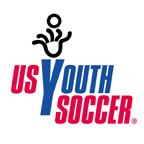Beware of Tournamentitis
by Sam Snow, Coaching Director for US Youth Soccer
Tournamentitis. True, it’s not a real word, but it does convey the condition of too many tournaments on the American soccer scene. Indoor, outdoor, 3-a-side or 11v11 -- on almost every weekend of the year there are hundreds of tournaments of one type or another taking place across the land. They are for old and young and every level of play.
Tournaments started as a means to supply games for teams when there were far fewer teams than today. The distance between the teams often meant that the investment in time and money to get to another soccer club caused everyone to maximize the effort by playing lots of games.
These tournaments began in earnest in the 1970s. Clearly the number of soccer clubs has grown dramatically since then. The distance between teams has become closer simply because of the proliferation of teams in town after town.
Yes, geography still plays a major role in the way we manage soccer in the US. The size of the country will not change and distance’s impact on time and cost for travel will not change. What has changed and will continue to change is the distance between the home grounds of clubs.
In the 1980s, tournaments took on another focus. They became the main revenue stream for many clubs. Proceeds helped to build facilities, greased the wheels of local governments and business to support soccer by their financial impact on a community. The profits made even helped to create jobs within the clubs for administrators and coaches. Certainly many positive types of fallout from tournaments have aided in the growth of soccer in our nation.
Yet the dominant place of tournaments in youth soccer is a double-edged sword.
Often teams participate in tournaments for poor soccer reasons or no soccer reason at all. When a team plans to play in a tournament it must ask: who, where, when and why?
Teams should indeed play in tournaments to get exposed to a different style of play or a different level of competition.
With young teenage teams it can be part of learning how to play on the road. For older teams the chance at regional and national level competition can also provide for scouting opportunities by college and professional coaches.
In any case, the number of tournaments must be balanced with the rest of the team’s schedule of training sessions and matches. There can be too much of a good thing.
The most talented players tend to play the most matches (100-plus) and are generally the least rested. By virtue of the number of matches played (and the minutes played therein) the most talented players tend to be under-trained (ideal 5:1 ratio; 10,000 hour rule - Istvan Balyi Ph.D., et al). Most of our elite players never learn how to train in a professional manner.
With so many tournament matches in two or three days, players go into survival mode and play in third gear. Seldom, except perhaps in the semifinal match, do they give 100 percent when on the field. This means our competitive players never learn how to play in a professional manner.
Mental and physical exhaustion leads to poor play, typified by kick-n-run soccer. These factors may also contribute to injuries as players who make late decisions get into tight situations and maybe bad tackles, unnecessary fouls, poor tactical positioning on the field and so forth.
To avoid the malady of tournamentitis a coach must carefully plan the season with a good balance of tournaments, league matches and training sessions.
In closing, here is the Position Statement from the 55 state association Technical Directors on the topic of tournament play:
"We believe that excessive play at competitive tournaments is detrimental to individual growth and development, and can serve to reduce long-term motivation.
"Do not multiple matches being played on one day and one weekend have a negative effect on the quality experience and development of the individual player? Further, far too many playing schedules include so many tournaments and matches that there is never an ’offseason.’
"We believe that players under the age of 12 should not play more than 100 minutes per day, and those players older than 13 should not play more than 120 minutes per day.
"We also recommend to tournament managers and schedulers:
The players should be allowed ample rest between matches.
* That all tournament matches be of the same length and that no full-length match be introduced during playoff rounds.
* Kickoff times allow players a reasonable opportunity to prepare for competition. This encompasses rest and recovery, nutrition and adequate time to warm-up and stretch after traveling a long distance in addition to taking into consideration extreme environmental conditions.
(Sam Snow contributes to the biweekly Coaches' blog on the US Youth Soccer website.)



